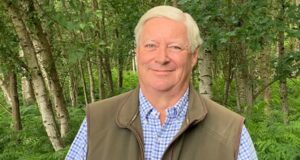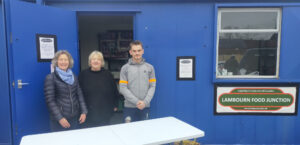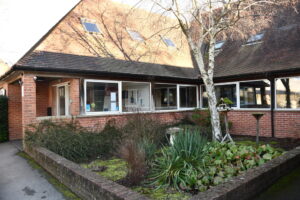
William McWilliam (28) grew up in Lambourn and has a passion for horses, a passion which has turned into his career. William was determined to become a farrier and signed up to the four and a half year Farrier course at Warwickshire College. His practical training was at Chapel Forge Farriers in Upper Lambourn. Learning to become a farrier is a very demanding career choice and from 27 students starting the course only 12 made it to the end, with only 6 passing the final examination.
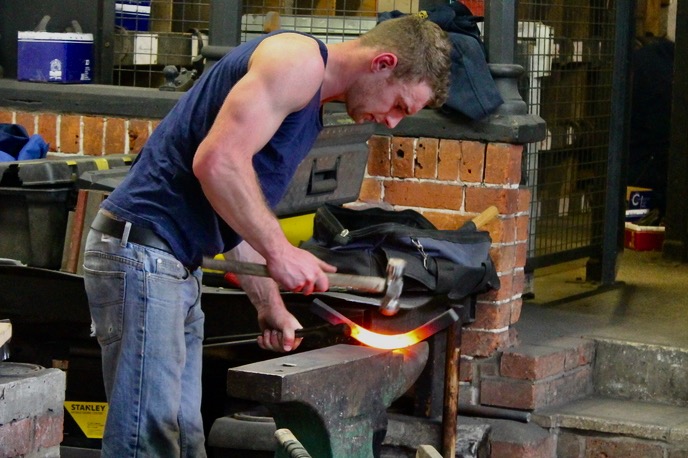
Becoming a farrier is much more than learning to shape and apply horse shoes. Over 60% of the course is about the anatomy and physiology of the leg of a horse. Trainee farriers learn in great detail not only about a healthy leg and hoof but also about all manner of ailments and problems which can befall horses legs. In fact it is very common for an equine vet to call a farrier for a specialist opinion.
Following the course, William studied for a further year and is now a member of the Worshipful Company of Farriers which was founded in 1605. As a fully certified farrier, with a diploma, William has now set up his own business, McWilliam Farrier, and is shoeing and treating horses throughout the Lambourn Valley and beyond. He enjoys working with racehorses, young stock and eventers and is regularly called upon to assist equine vets in a consultative capacity for remedial work.
William in action!
I joined William one sunny Saturday at Uplands, the racehorse training establishment of Warren Greatrex. Chapel Forge Farriers provide farrier services to Warren Greatrex and William was shoeing Sunny Express, a five year old from breeder Peter O’Rourke in Ireland.
One first has to check the condition of the leg and hoof before carefully removing the old shoe, called a plate.
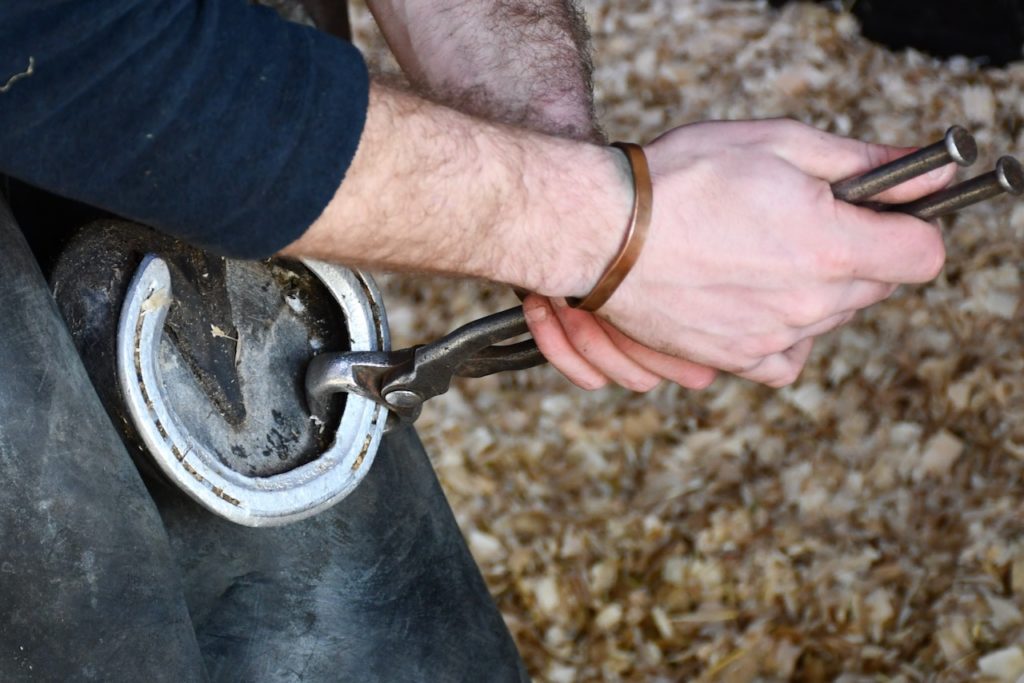
Then the hoof has to be checked for any damage and trimmed to remove any excess hoof which has grown.
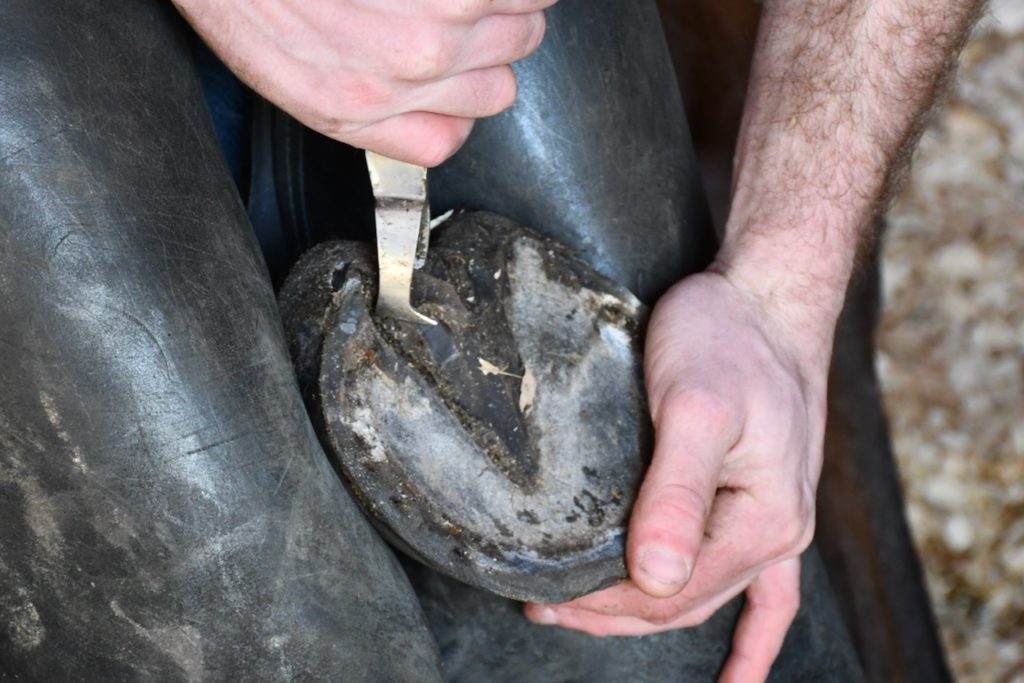
Rasping the hoof is vital to create a flat and even surface for the new plate to be attached.
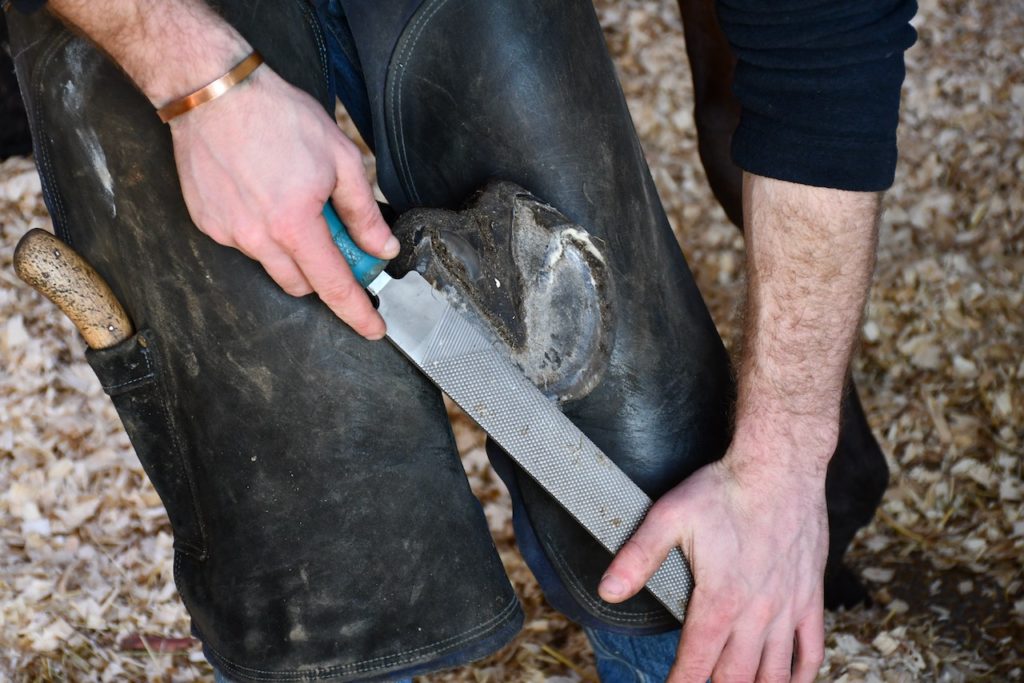
Plates for racehorses are typically made of aluminum and are manufactured in a vast number of sizes and types. William also uses steel plates in a hot shoeing process which requires the shoe to be heated and shaped to the individual hoof. Hunters and Eventers are typically hot shoed.

William chooses the plate most appropriate for Sunny Express. However, it is not a matter of just applying the plate, it first has to be formed to match the exact shape of the hoof.

Before nailing the plate to the hoof, a farrier checks the balance of the hoof. Just like humans some horses have a slight tendency to use one side more than another. This requires adjustments to hoof and plate before applying the plate to prevent lameness and ensure optimal performance on the racecourse.
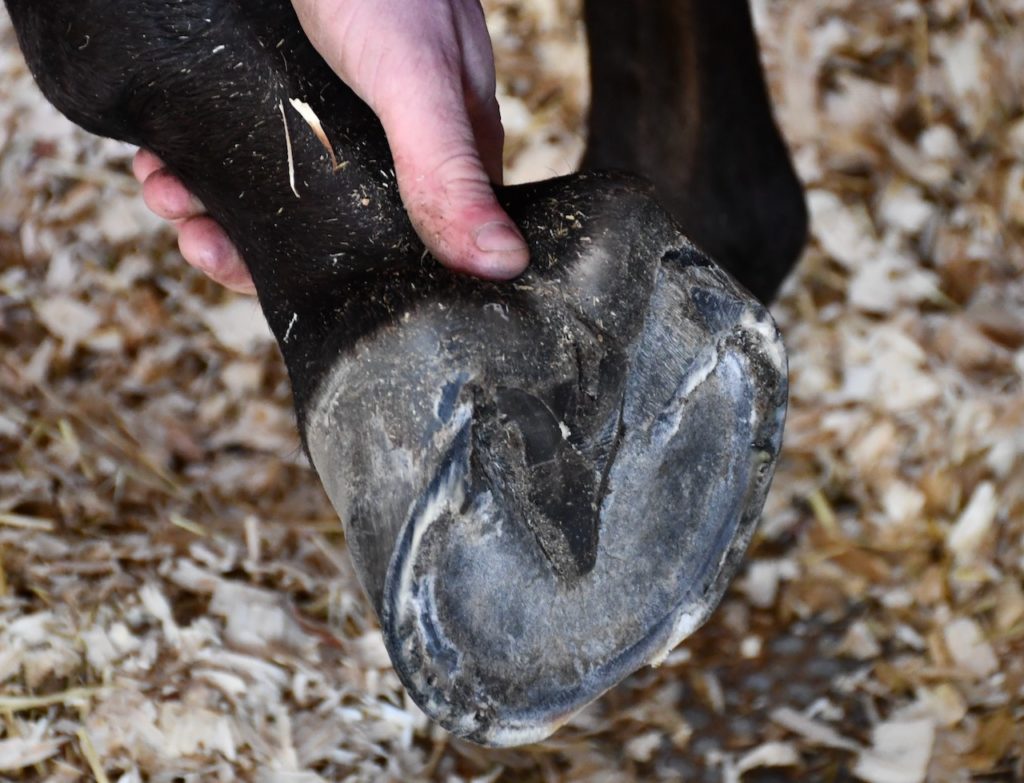
Nailing plates is a skilled art. The so called white line on the hoof marks the area where it is safe to place a nail. Further in and the nail will penetrate blood vessels and cause severe pain to the horse leading to lameness.

William selects the smallest nails possible for the particular plate and hoof combination in order to minimise the impact on the hoof whilst still ensuring that the plate remains firmly attached.
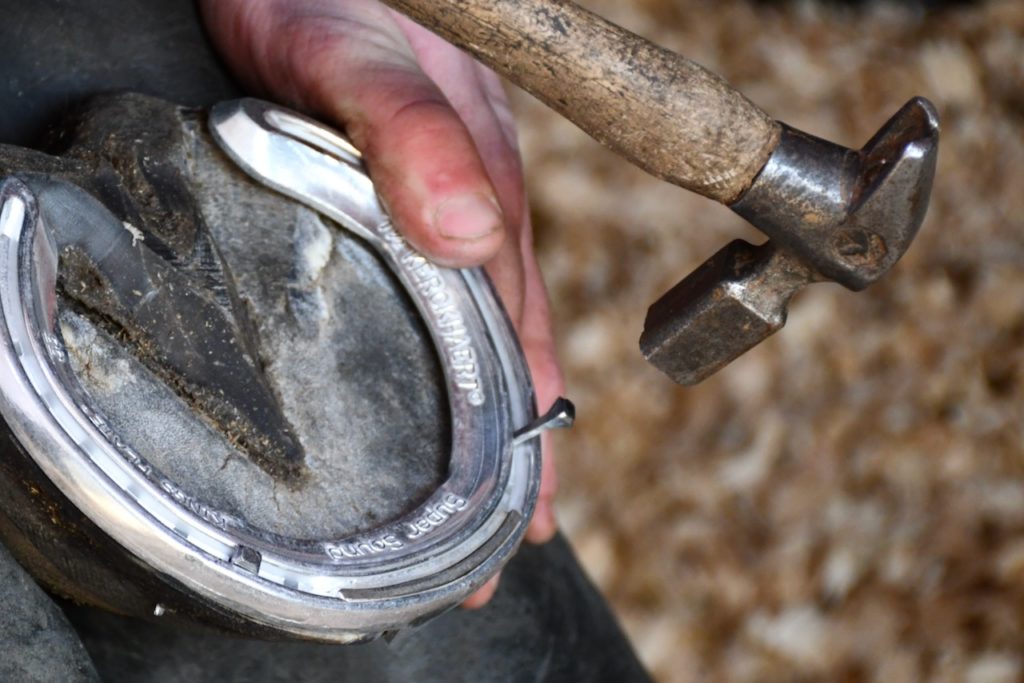
The nail is then ringed off with a special tool to remove the sharp tip.

Once applied, the plate and nails are tapped down using a special hammer.

At this stage the nails are still protruding through the hoof and are then clenched up using a special tool to embed them in the shoe for a tight hold.
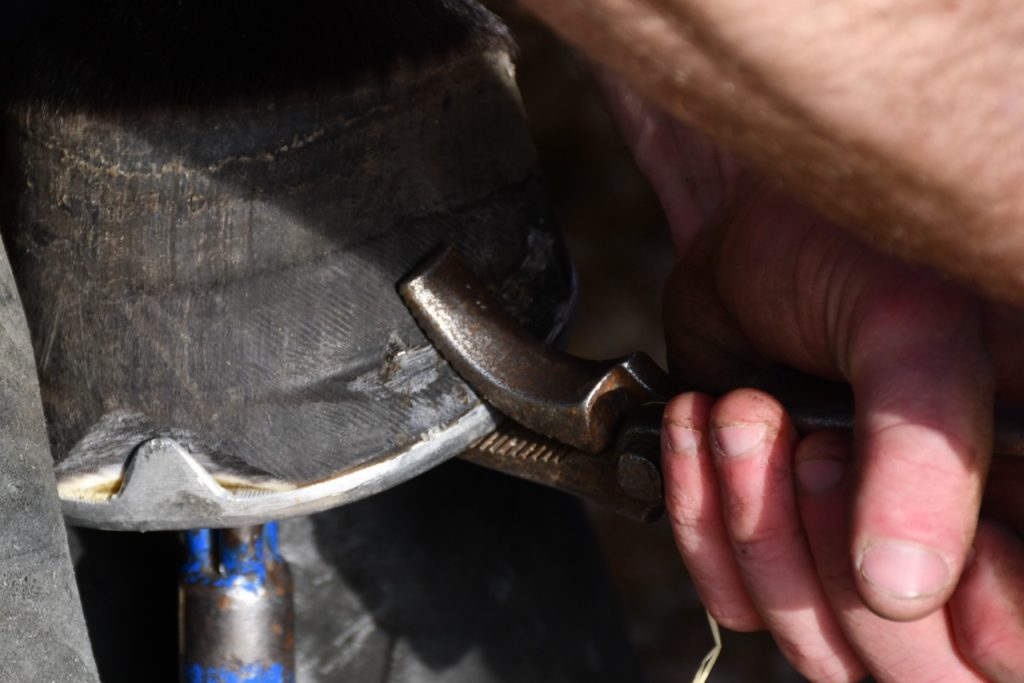
A rasp is used to smooth off the plate and hoof for a perfect fit. The rasp is also used to create a small undercut between the plate and the hoof to prevent the hoof growing over the shoe.
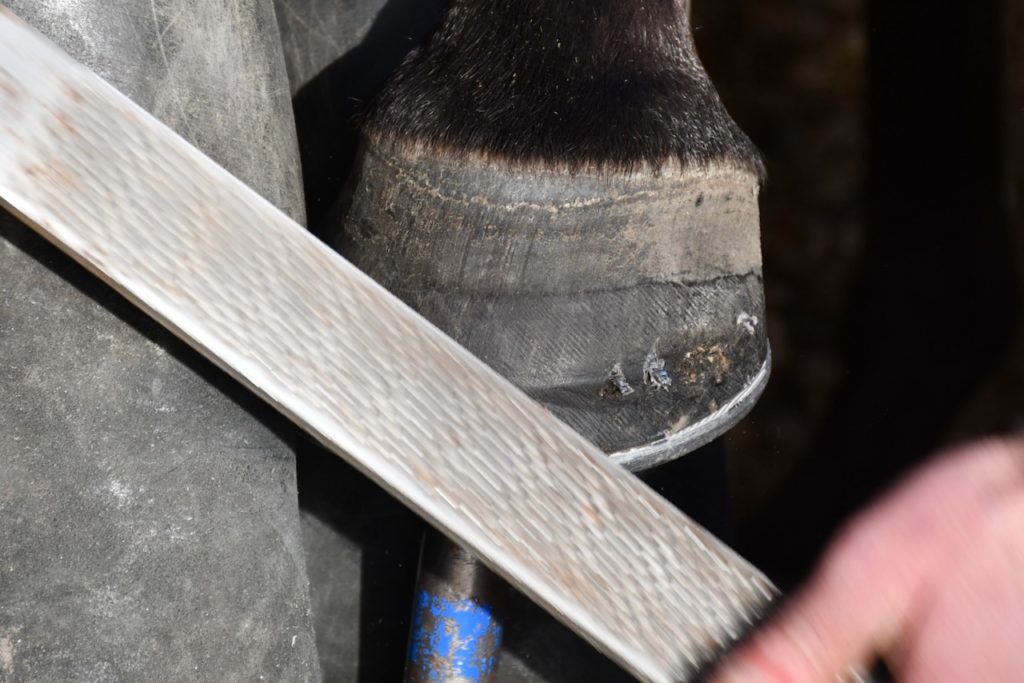
The end result is a perfectly fitted plate which will last about 21 days on a horse which is being exercised daily.
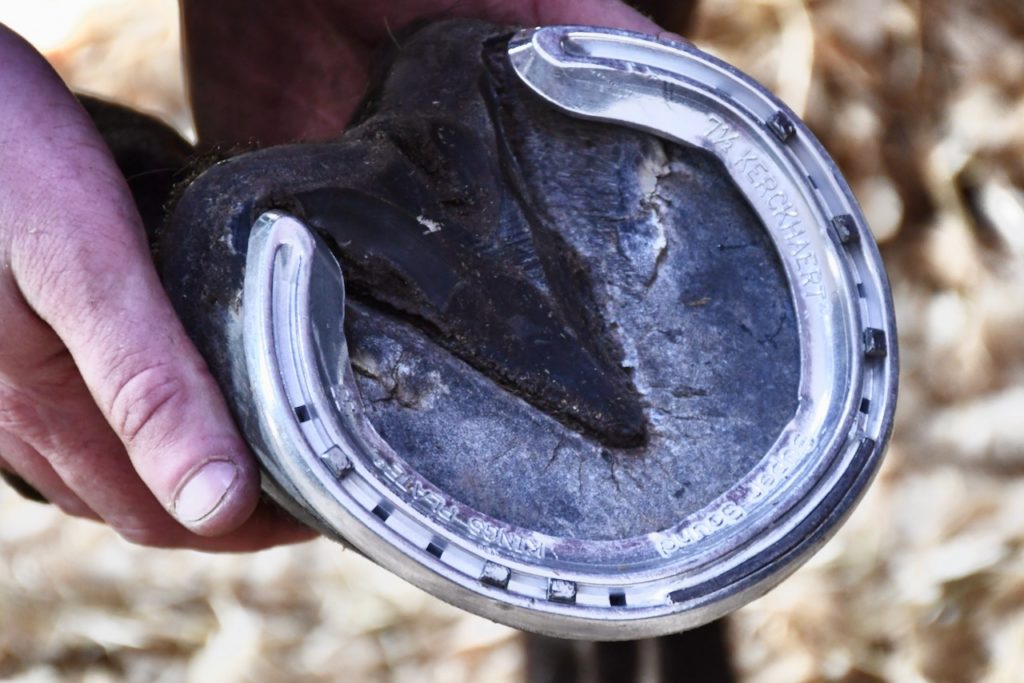
William loves his job although it can be physically hard at times when a horse is not as good tempered as Sunny Express.
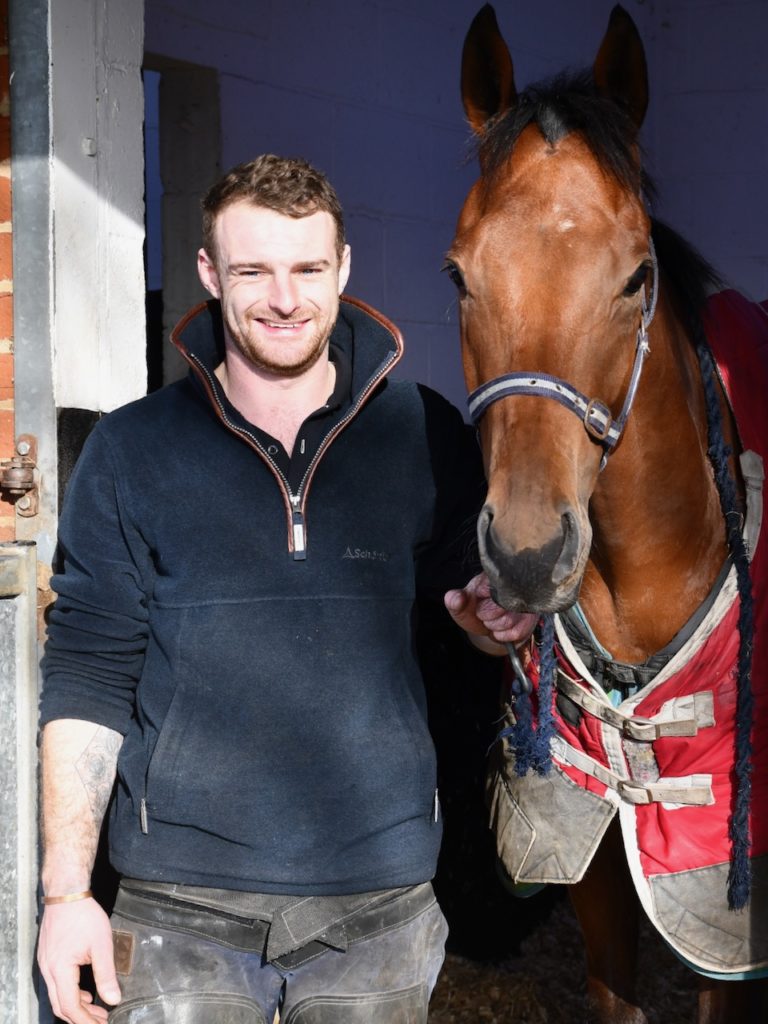
William can be contacted on +44 794 442 1362

Article written by Christian Noll
